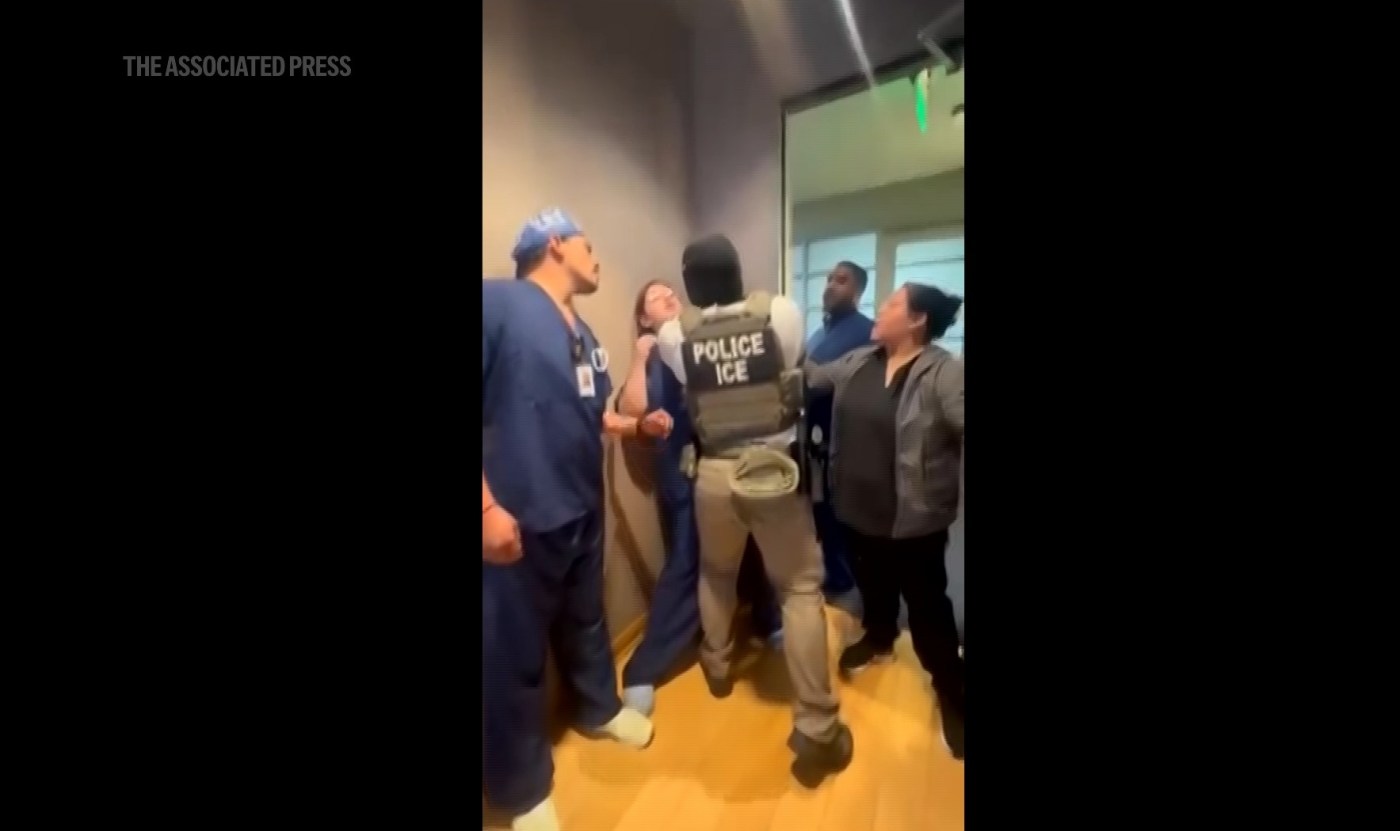Shots fired in San Bernardino, spike strips in Van Nuys, and clashes in Santa Ana highlight a rise in confrontations between immigration agents and civilians — a trend experts warn is intensifying across Southern California.
Lakewood Councilmember David Arellano says he was among those caught up in the climate of suspicion. During what was supposed to be a routine boat ride, he said, Border Patrol agents in tactical gear pulled alongside, boarded, and demanded identification before backing down once he showed his city ID.
“I’m a lifelong U.S. citizen,” Arellano wrote in a July Facebook post, which included a photo of two agents onboard. “A public servant. And yet in that moment, I was just someone who is brown.”
Since then, the legal safeguards against such encounters have weakened. On Monday, Sept. 8, the U.S. Supreme Court’s conservative majority overruled a lower court’s order that had barred immigration agents from conducting roving patrols based solely on such factors as race, language, type of job or location. President Donald Trump’s stance is to remove those in the country illegally, especially people who have committed crimes or who he says have cost taxpayers too much.
Some say the confrontations are not isolated, but part of a wider cycle of fear and resistance that is expected to intensify as operations expand.
In Santa Ana, video shows masked agents striking and pepper-spraying Narisco Barranco, the father of three U.S. Marines, after he allegedly swung a weed whacker in the direction of the officers. In Ontario, two surgical-center staffers were indicted on charges of assaulting agents during an attempted arrest inside the clinic. In Van Nuys, four people were accused of laying homemade spike strips to stop immigration vehicles.
And, earlier this summer, a man pleaded not guilty after allegedly throwing concrete chunks at officers during a raid in Paramount.
Albert Camarillo, professor emeritus at Stanford University, said such confrontations reflect how frustration among young Latinos is fueling aggressive tactics: “In terms of people reacting – not letting people pass, blocking them with cars, or throwing things at them – there’s a resistance of a young population that doesn’t have the guardrails that most people do.”
But some warn such acts can have unintended consequences.
“It gives, unfortunately, fodder to those who would like to see this kind of spectacle as evidence that people, immigrants, somehow don’t deserve to have rights and don’t deserve to be in this country,” said Juan Chavez, a historian at Cal State Los Angeles.
Perhaps the most dramatic clash occurred in San Bernardino, where federal agents opened fire during an attempted immigration arrest, shattering a car’s windows and prompting a tense, hourslong standoff that ended with no arrests. Agents accused the man of trying to run them down with the car during a traffic stop; his family said he has been trying to become a U.S. citizen for 20 years.
San Bernardino Mayor Helen Tran said the city is demanding accountability.
“While federal officials claim the agents acted in self-defense, citing an alleged attempt by the driver to harm officers, that explanation remains unverified and deeply troubling,” she said. “Here in San Bernardino, we stand firm: Justice must be transparent; trust must be earned, not forced.”
Camarillo, the Standard professor, argued that the confrontations highlight how enforcement priorities have shifted.
“They’re not apprehending the criminals,” he said. “It’s clear that the idea upon which the campaign was premised, that is no longer the primary factor.”
U.S. Immigration and Customs Enforcement data supports that view: As of Sept. 10, 70.3% of the people detained by ICE had no criminal convictions.
Federal officials argue that their agents are under siege. The Department of Homeland Security says in a statement its officers are facing “an 830% increase in assaults, rocks and Molotov cocktails being hurled at them, and even being shot at.”
When asked to clarify how that figure was calculated, DHS did not respond.
Federal leaders have said enforcement will intensify in the coming weeks, with Homeland Security Secretary Kristi Noem calling current raids “just the beginning” and border czar Tom Homan naming Los Angeles among the sanctuary cities where operations will ramp up.
Roxanne Hoge, chairwoman of the Los Angeles County Republican Party, said she supports Monday’s Supreme Court decision allowing roving patrols, even if it means U.S. citizens are occasionally stopped.
“When law enforcement does a DUI checkpoint, they pull me over even though I don’t drink,” she said. “If there weren’t sanctuary laws that made law enforcement have to go into communities, we wouldn’t have to use dragnets.”
She added that rising assaults show why officers take measures to protect themselves, such as wearing masks during raids. As a naturalized citizen, she said she believes immigrants should follow the legal process — a sentiment she believes is widely shared among other legal immigrants.
“It’s certainly OK to disagree on policies and how they work — it’s good,” Hoge said. “But you should never lay hands on law enforcement or harm another person you disagree with.”
Stanford’s Camarillo warned that the cycle of fear and defiance is unlikely to slow.
“You’re going to find more violence,” he said. “It’s escalating.”
He noted that Southern California in particular will remain a hotspot for such encounters, because of its large immigrant population and its role as a political flashpoint in the national immigration debate.
“It’s retribution,” Camarillo said. “It’s clear that Trump is targeting a place like Southern California.”
